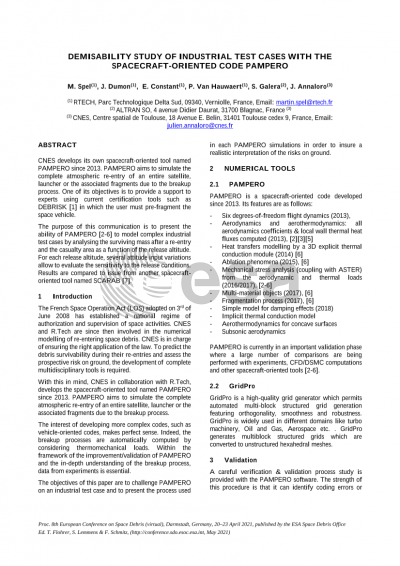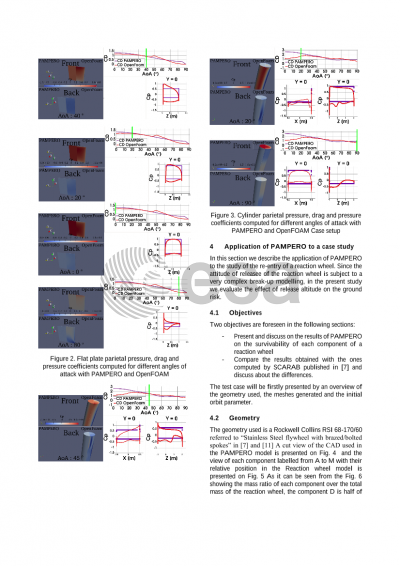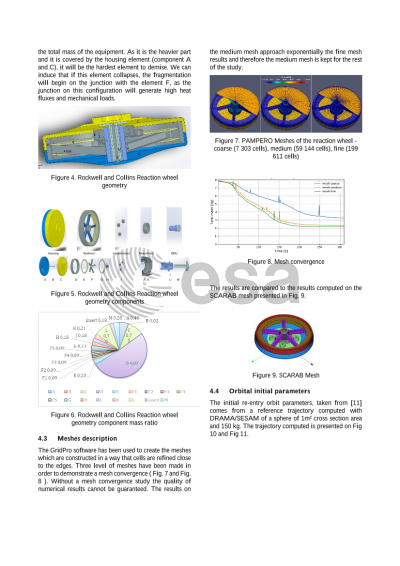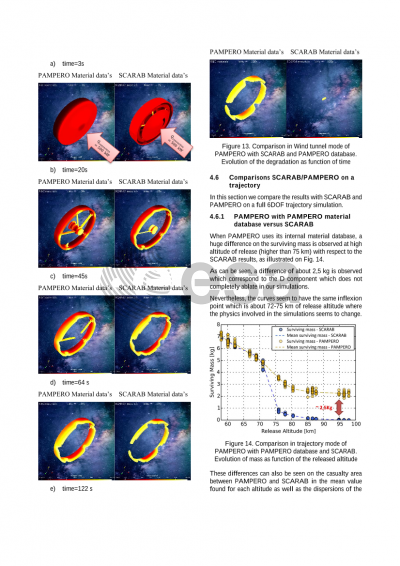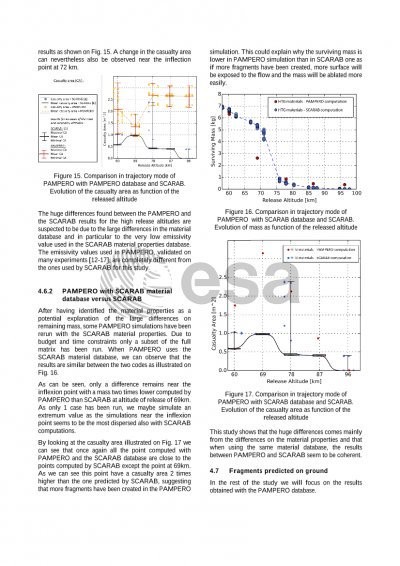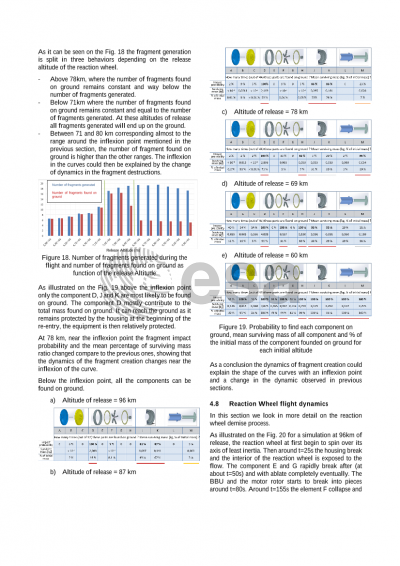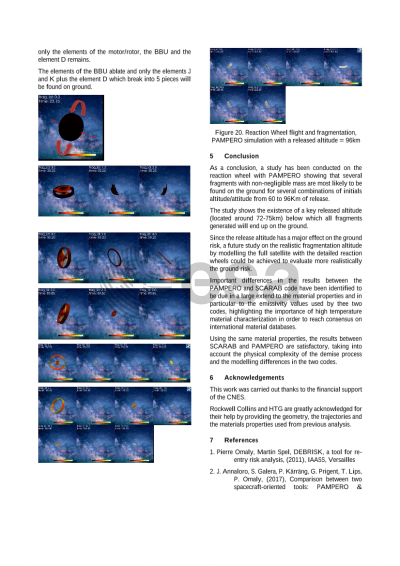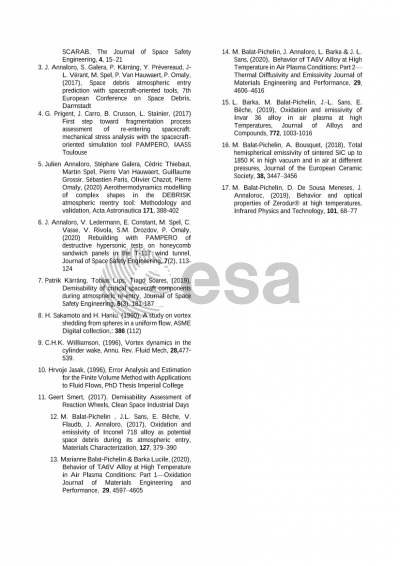Document details

Abstract
The French Space Operation Act (LOS) adopted on 3rd June 2008 has established a national regime of authorization and supervision of space activities. CNES and R.TECH are since then involved in the numerical modelling of reentering space debris. CNES is in charge of ensuring the right application of the law. To predict the debris survivability during their re-entries and assess the prospective risk on ground, the development of a complete multidisciplinary tools is required.
With this in mind, CNES in collaboration with R.TECH, develops the spacecraft-oriented tool named PAMPERO since 2013. PAMPERO aims to simulate the complete atmospheric reentry of an entire satellite, launcher or the associated fragments due to the breakup process. The characteristics of PAMPERO are the following:
- Six degrees-of-freedom flight dynamics,
- Aerodynamics and aerothermodynamics analysis [1,2]: aerodynamics coefficients & parietal thermal heat fluxes computation,
- Heat transfers modeling by a 3D thermal conduction module [3],
- Mechanical stress analysis from the aerodynamic and thermal loads,
- Estimate of the destruction phenomena: ablation & fragmentation [3].
The purpose of this communication is to highlight the ability of PAMPERO to model complex industrial test cases by discussing our results by analyzing the surviving mass after a reentry and the casualty area as a function of the release altitude. For each release altitude, several attitude input variations allow to evaluate the sensitivity to the release conditions. Results are compared to results issued from an object-oriented tool named DEBRISK, a CNES tool, or to results issued from another spacecraft-oriented tool named SCARAB [4].
[1] Julien Annaloro, et al., Comparison between two spacecraft-oriented tools: PAMPERO & SCARAB, Journal of Space Safety Engineering, Volume 4, Issue 1, 2017, Pages 15-21, ISSN 2468-8967, https://doi.org/10.1016/j.jsse.2017.02.004.
[2] Julien Annaloro, et al., Space debris atmospheric entry prediction with spacecraft-oriented tools, Darmstadt, Germany: s.n., 2017. Proc. 7th European Conference on Space Debris. pp.
[3] Julien Annaloro, et al., Rebuilding with PAMPERO of destructive hypersonic tests on honeycomb sandwich panels in the T-117 wind tunnel, Journal of Space Safety Engineering, Volume 7, Issue 2, 2020, Pages 113-124, ISSN 2468-8967, https://doi.org/10.1016/j.jsse.2020.04.004.
[4] Patrik Kärräng, et al., Demisability of critical spacecraft components during atmospheric re-entry, Journal of Space Safety Engineering, Volume 6, Issue 3, 2019, Pages 181-187, ISSN 2468-8967
Preview
